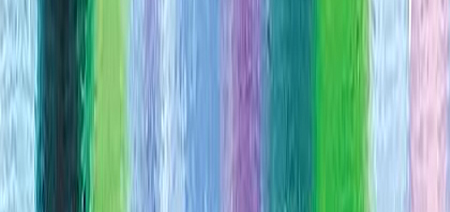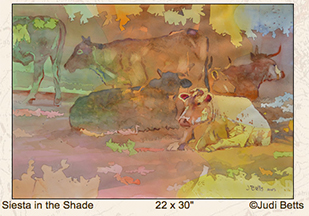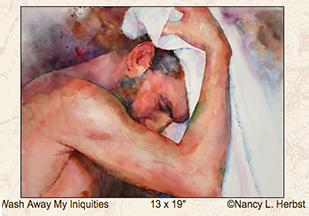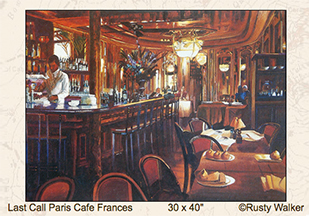
Watercolor Factoids
Interest in painting in watercolor has perhaps never been stronger. No longer stigmatized as only a “sketch” medium, serious artists are constantly pushing the boundaries of what watercolor can be. From dancing, vibrating, light-filled passages to richly colored transparent darks, from cascading wet washes to staccato dry brush effects, watercolors can produce painting effects which no other medium can match. In the hands of a Master, a rapidly executed watercolor thrills with its immediacy, energy and sheer boldness. What may appear simple in execution can take years to perfect, and this quality often discourages all but those artists who have the determination and discipline to undertake the challenge of learning to paint in watercolor.
Below is some interesting and useful information about watercolors in general:
1. Watercolors are made from pigments that are ground together and held together with a gum binder that’s water-soluble, of course. The pigments used in watercolor paint can be either natural or synthetic.
2. Watercolor dries a lot lighter than when it is applied. In other words, the color you apply to the canvas won’t be the same color you’ll get once the paint has dried out. The final, dried color is about two times lighter than the original color applied to the canvas.
3. Watercolors are safe and practically non-toxic. However, you should still avoid getting it on your hands.
4. Watercolor has been used for many millennia – cave paintings done in paleolithic Europe were done in watercolor. It gained a surge of popularity during the Renaissance when it became appreciated is a proper art medium.
5. Watercolors can be transparent or opaque. Transparent watercolors let the light into the canvas and reflect it back, creating a sort of glowing effect. Opaque watercolors, on the other hand, don’t let the light in as much and instead make it bounce off the pigment, which creates a sort of dull and weathered effect.
6. Watercolor paint comes in tubes or pans. With tubes, you just squirt the paint out and go from there. Pans are basically square blocks of paint put together in a plastic or metal box. Generally speaking, tube paints are much easier to mix; they’re also cheaper and are better for creating large washes. As a result, most artists prefer to use tube paints.
7. Fugitive watercolors fade very quickly. Most of the watercolor paints available now are non-fugitive, meaning the color won’t fade as quickly and will, therefore, last a lot longer.
8. The same watercolor by different manufacturers may not look the same. If you want to use a particular color, make sure to buy your paints from a single manufacturer so you get a consistent color.
9. As it is water-based, watercolor paint can be quite unpredictable. When painting with watercolors, you have to learn how to control the paint. Of course, you could let the paint do its own thing and incorporate this into your painting.
10. Staining refers to how easy it is to remove watercolor paint from a support once it’s been applied or has completely dried. A staining paint is one that’s hard to remove, while a less-staining paint can easily be wetted and lifted. The make of paint and the make of the support can both affect a paint’s staining.
Some Famous Watercolor Painters
10 Things to Know About Painting with Watercolors
Why Watercolors? Ten Painters Answer the Question…



